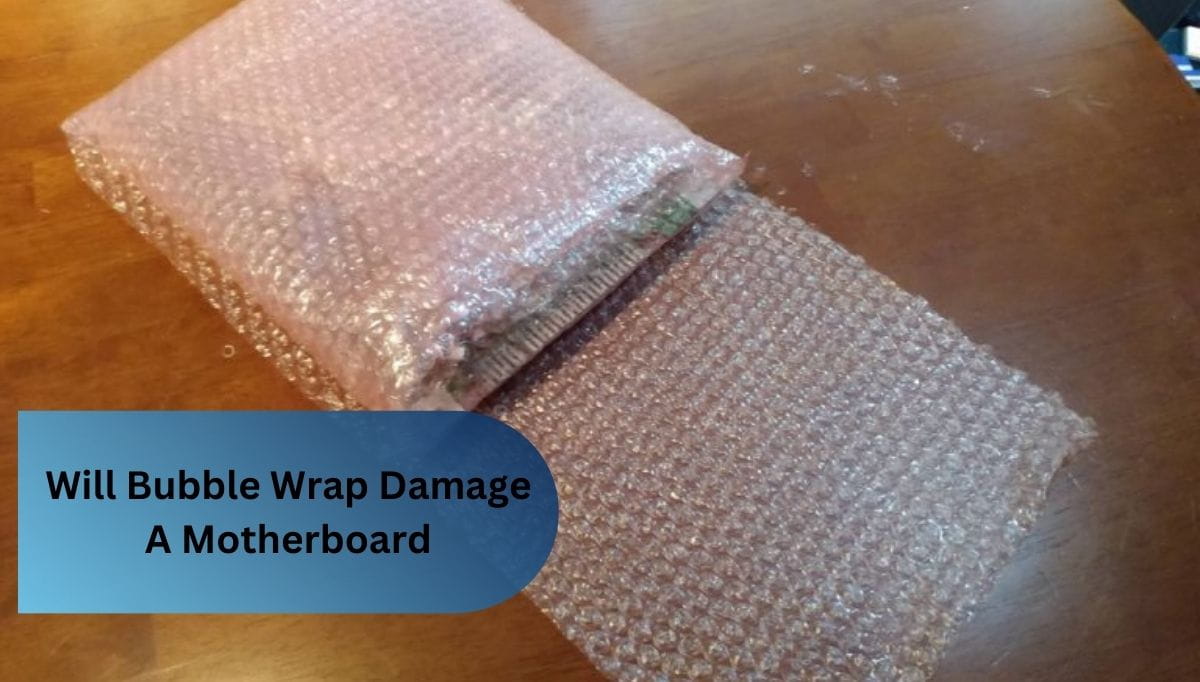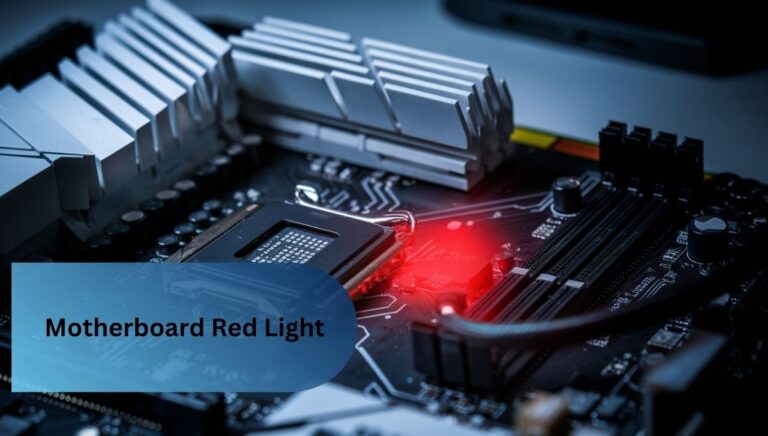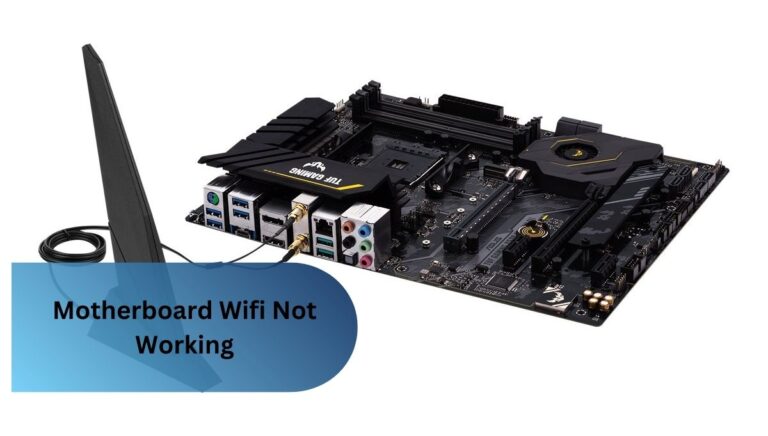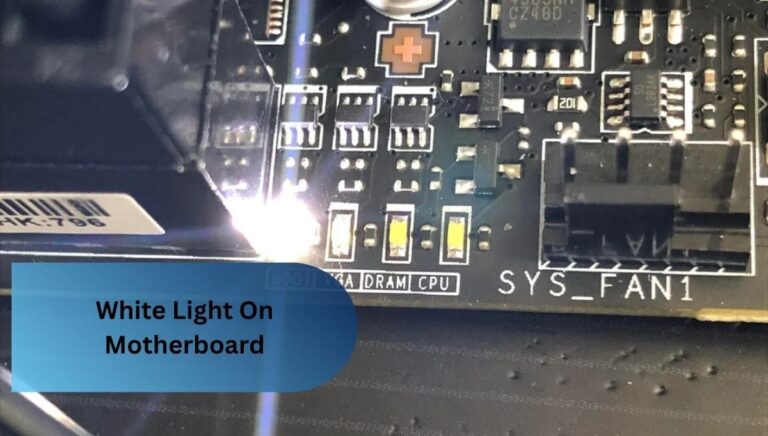Will Bubble Wrap Damage A Motherboard – Uncover The Risks!
Last year, I shipped my motherboard using regular bubble wrap, thinking it would provide enough protection. When it arrived, however, the system wouldn’t power up, and I quickly realized that static electricity from the bubble wrap had damaged the sensitive components. After that experience, I learned the importance of using anti-static bubble wrap or, even better, an anti-static bag. It’s a small extra step, but it makes all the difference in protecting your motherboard from damage.
Yes, regular bubble wrap can damage a motherboard because it can create static electricity. This static can hurt the sensitive parts of the motherboard. To keep it safe, always use anti-static bubble wrap or put your motherboard in an anti-static bag before wrapping it.
In this article, we’ll discuss “Will Bubble Wrap Damage A Motherboard”, how to use it safely, and other options to protect it from static electricity.
What Makes Bubble Wrap A Risk For Motherboards?
Bubble wrap can build up static electricity, which makes it risky for motherboards. When the wrap gets squeezed or rubbed, it can store static charge, which might discharge onto the motherboard’s sensitive parts.
Even a small shock can damage the tiny circuits and chips, causing problems or even making the motherboard stop working. Also, if bubble wrap is wrapped too tightly, it can press on delicate parts, causing physical damage. While bubble wrap does cushion, using it without precautions—like anti-static materials—can put your motherboard at risk.
How Static Electricity Impacts Sensitive Components
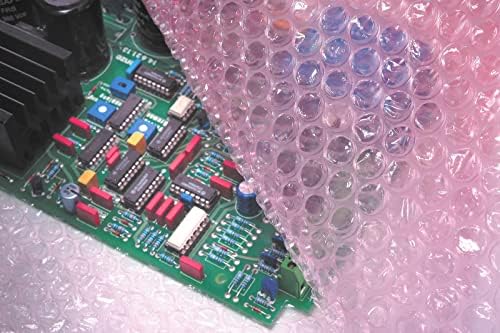
Static electricity can really mess with sensitive electronics, causing damage, malfunctions, or even complete failure. When static electricity discharges onto a motherboard or other parts, it can heat things up, mess with the tiny protective layers, or even physically damage the chip.
Key points about how static electricity affects sensitive components:
1. Electrostatic Discharge (Esd):
When static charge builds up on something (like a person or object) and then discharges onto a sensitive component, it’s called Electrostatic Discharge (ESD). This sudden release of energy can seriously harm small circuits and transistors.
2. How It Causes Damage:
- Heat: The discharge generates heat, which can melt or damage the tiny connections inside the component.
- Oxide Layer Damage: In transistors, ESD can ruin the thin layer that controls the flow of electricity, making the component stop working.
- Junction Breakdown: High voltage from the discharge can break down the semiconductor connections, causing the component to fail.
3. Which Components Are Most At Risk?
Small, delicate parts like integrated circuits (ICs), microchips, memory chips, and transistors are especially vulnerable to static damage because of their small size and sensitive design.
Read Also: Fix Your Motherboard Wifi Not Working – Easy Solutions!
4. Signs That Damage Has Happened:
- Failure: The component or device may just stop working.
- Glitches: You might see weird behavior or random problems.
- Slow Performance: The device might slow down, or you may see more errors than usual.
5. How To Prevent Static Electricity Damage:
1. ESD Protection Tips:
- Grounding: Use grounded wrist straps and surfaces to safely release static charges.
- Anti-static Packaging: Store your sensitive parts in anti-static bags to keep static buildup away.
- Ionizers: These devices help neutralize static charges in your workspace.
- Proper Handling: Handle parts carefully, avoid touching them too much, and keep movements smooth.
By following these simple precautions, you can lower the chances of static electricity damaging your sensitive electronic parts, keeping them working properly for longer.
How To Safely Use Bubble Wrap For A Motherboard
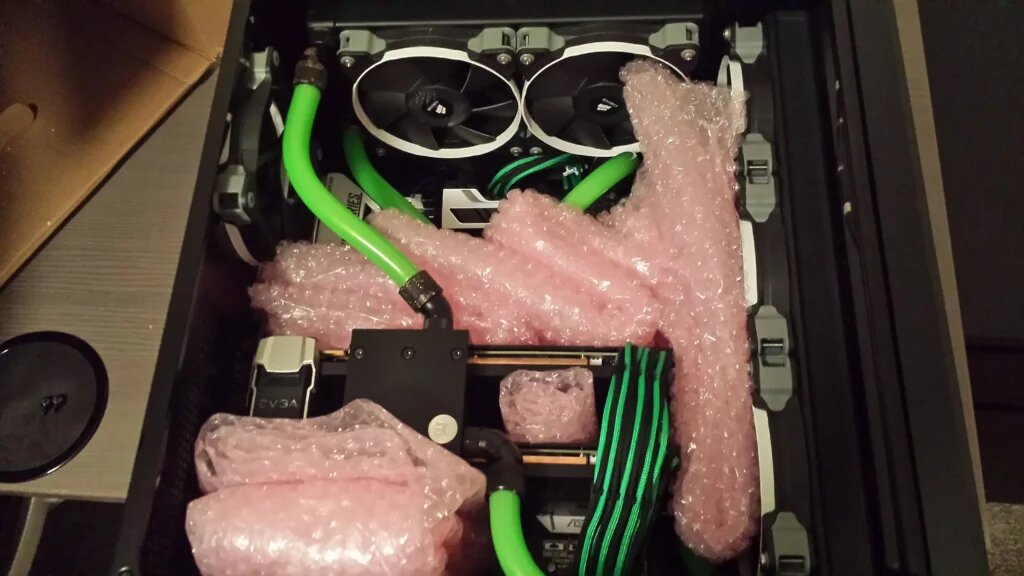
To safely use bubble wrap for protecting a motherboard, you need to follow a few important steps to avoid potential risks, mainly static electricity (ESD) and physical damage. The goal is to protect the motherboard from both static buildup and pressure during shipping or storage.
1. Use Anti-Static Bubble Wrap:
Instead of regular bubble wrap, use anti-static bubble wrap. This type of wrap is specially made to prevent static electricity, helping protect your motherboard’s sensitive parts from any static discharge.
2. Place The Motherboard In An Anti-Static Bag First:
Before wrapping the motherboard, put it inside an anti-static bag. This bag is important because it acts as a shield, stopping static from building up and further protecting the motherboard’s delicate components.
3. Don’t Wrap Too Tight:
When wrapping the motherboard, don’t make it too tight. Tight wrapping can put too much pressure on the motherboard, which can damage the components. The wrap should be snug but not too tight, so the motherboard stays in place without harm.
4. Use Double-Boxing For Extra Protection:
For even better protection, place the bubble-wrapped motherboard inside a sturdy box with extra padding, like foam or packing peanuts. This extra layer of protection helps prevent both physical damage and static issues during transport.
5. Store In A Safe Place:
Make sure to store the bubble-wrapped motherboard in a dry, temperature-controlled area. This helps avoid environmental factors like humidity, which could make static electricity worse or cause other damage.
By following these steps, you can safely use bubble wrap to protect your motherboard from damage.
Better Alternatives To Bubble Wrap For Protecting Your Motherboard
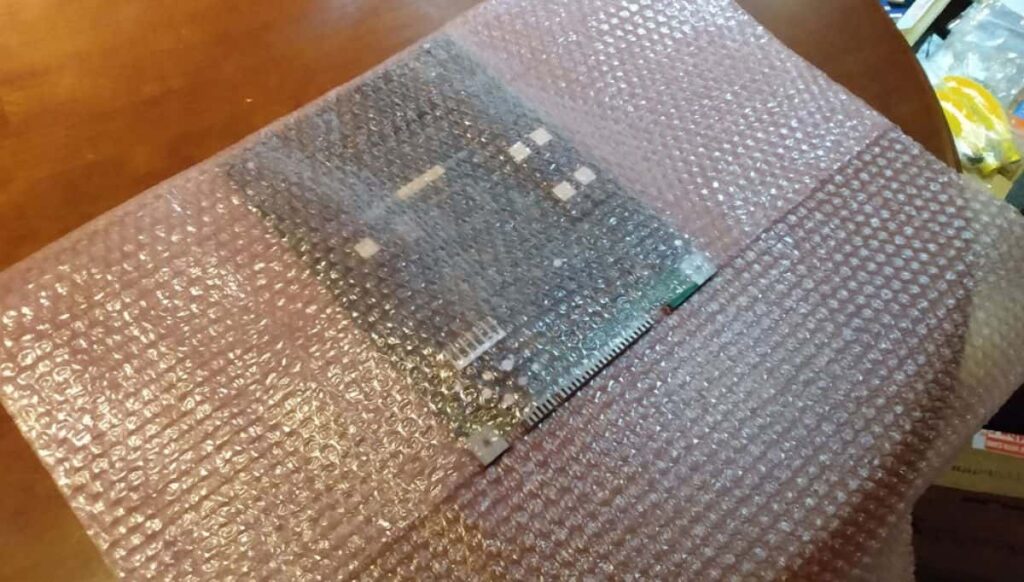
When looking for alternatives to bubble wrap for protecting your motherboard, there are several eco-friendly options that are just as protective but better for the environment. These alternatives strike a good balance between keeping your motherboard safe and reducing your impact on nature.
1. Mushroom Packaging:
This is a cool and compostable packaging made from agricultural waste and mycelium (the root structure of mushrooms). It works as a natural glue and forms a strong, protective case for delicate items like motherboards.
Read Also: New Motherboard WiFi Not Working – Tips how to follow!
2. Corrugated Bubble Wrap:
This is an eco-friendly version of regular bubble wrap. It protects your items from impacts just like the traditional kind, but it’s made from recycled paper, making it better for the environment.
3. Biodegradable Plastics:
These plastics are made from plant-based materials, which means they break down naturally in the right conditions. They protect your motherboard just like regular plastic but without the long-term environmental harm.
4. Cornstarch Packaging:
Made from plant-based materials, cornstarch packaging is another great biodegradable option. It provides good shock absorption and protection for your motherboard while being easy on the environment.
5. Seaweed Packaging:
Seaweed packaging is an emerging option that’s completely biodegradable. It offers a sustainable and protective solution for fragile items like motherboards.
Important Things To Think About When Choosing Alternative Packaging:
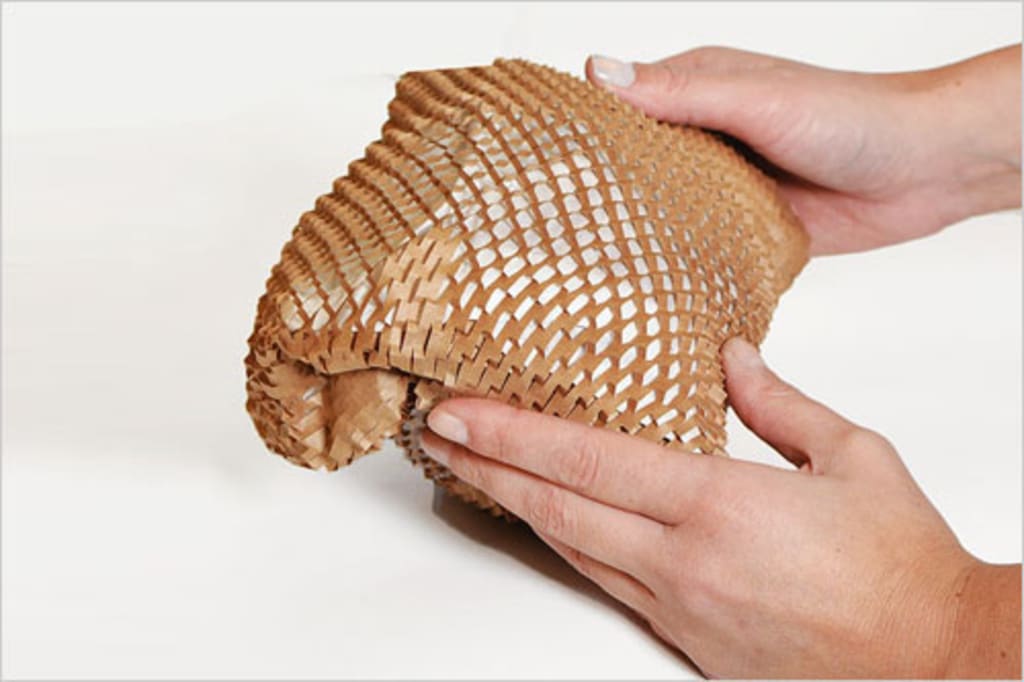
- Protection Level: Make sure the packaging provides enough cushioning to protect your motherboard from any bumps or shocks during transport.
- Environmental Impact: Opt for materials that are recyclable or compostable to minimize your environmental footprint.
- Cost Effectiveness: Look at the price of these alternatives and make sure they fit within your budget while still offering good protection.
By choosing these eco-friendly options, you can keep your motherboard safe and do your part to protect the planet.
FAQ’s
1. Can Bubble Wrap Damage A Motherboard?
Yes, bubble wrap can damage a motherboard. The static electricity it builds up can harm the sensitive parts of the motherboard. Also, if the bubble wrap is too tight, it might put pressure on the components and cause physical damage.
2. Is Anti-Static Bubble Wrap Safe For Motherboards?
Yes, anti-static bubble wrap is safe for motherboards. It helps stop static electricity from building up and discharging, which protects your motherboard from damage. Plus, it gives extra cushion to keep it safe from physical harm.
3. What’s The Difference Between Anti-Static And Regular Bubble Wrap?
The main difference between anti-static and regular bubble wrap is that anti-static bubble wrap stops static electricity from building up. This makes it safer for electronics like motherboards. Regular bubble wrap doesn’t offer this protection, so it’s not as safe for sensitive devices.
4. Should I Use An Anti-Static Bag Before Bubble Wrapping?
Yes, it’s a good idea to put your motherboard in an anti-static bag before wrapping it in bubble wrap. The anti-static bag helps protect the motherboard from static electricity, which can damage the parts inside. It’s an extra layer of safety during transport.
5. Are Foam Inserts Better Than Bubble Wrap For Packaging?
Foam inserts are usually better than bubble wrap for packaging because they provide stronger protection against shocks. Unlike bubble wrap, which can shift around, foam inserts stay in place and keep things safe more consistently.
6. Can Tight Wrapping Of Bubble Wrap Cause Damage?
Wrapping bubble wrap too tightly can damage sensitive parts by putting too much pressure on them. This pressure might harm the motherboard or other delicate electronics while they’re being moved.
Conclusion:
To wrap things up, bubble wrap can protect your motherboard, but it has some risks, especially with static electricity and pressure. To keep your motherboard safe, always use anti-static bubble wrap, put it in an anti-static bag first, and don’t wrap it too tightly. You can also look into eco-friendly options like mushroom or cornstarch packaging for better protection and less harm to the environment. By following these simple steps, you can keep your motherboard safe and avoid costly damage while shipping or storing it.
Read More:
